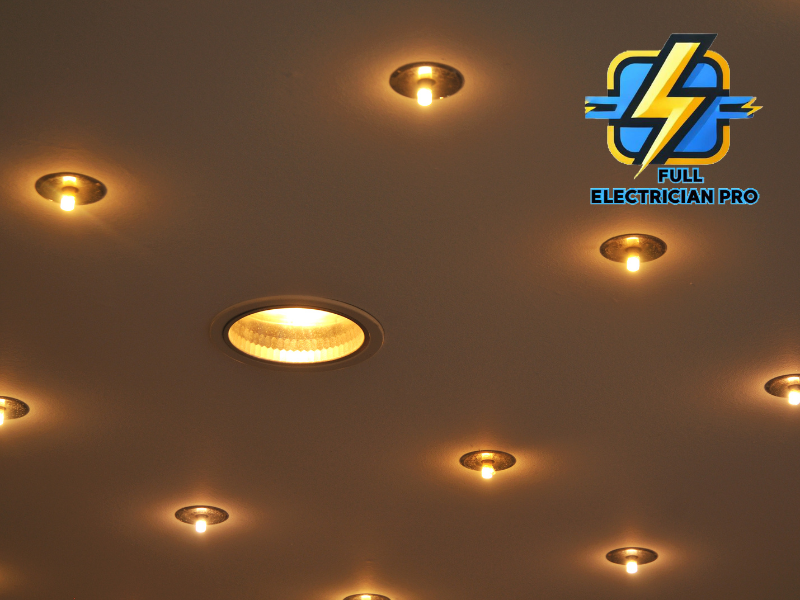
Recessed Lighting: Common Issues, Repairs, and Benefits
Recessed lighting, also known as can lighting or downlights, is a sleek and versatile option for both homes and commercial spaces. It provides a clean, modern look while delivering focused and unobtrusive illumination. However, like any lighting system, recessed lighting requires proper installation and maintenance to function optimally. This guide covers the common and uncommon issues with recessed lighting, necessary repairs, and the many benefits of using recessed lighting to enhance your space.
Common Issues with Recessed Lighting
1. Flickering Lights: Flickering is a common problem in recessed lighting and is often caused by loose connections, incompatible dimmer switches, or faulty bulbs. Ensuring proper installation and using compatible components can prevent flickering.
2. Overheating: Recessed lights installed in poorly ventilated areas or without proper insulation can overheat, leading to frequent bulb burnout or safety hazards. Installing insulation-compatible (IC) fixtures can help solve this issue.
3. Poor Lighting Distribution: If recessed lights are installed too far apart or in improper locations, they may not provide adequate lighting. Adjusting the layout or adding more fixtures can improve light distribution.
4. Bulb Burnout: Recessed lights that use traditional incandescent bulbs can experience frequent burnout due to heat buildup. Switching to energy-efficient LED bulbs can help reduce the frequency of replacements.
5. Tripped Circuit Breakers: Recessed lighting systems connected to overloaded circuits can cause circuit breakers to trip, disrupting the lighting. Properly balancing the electrical load or installing dedicated circuits can prevent this issue.
Uncommon or Complex Issues
1. Ceiling Sagging or Damage: If recessed lights are not installed with proper support, they can cause the ceiling to sag or even crack over time, especially if heavy fixtures or incorrect mounting techniques are used.
2. Incompatible Dimmer Switches: Not all recessed lights are compatible with dimmer switches. Using the wrong type of dimmer can cause the lights to flicker, buzz, or fail prematurely. Installing the correct dimmer switch is essential for proper operation.
3. Wiring Problems: Improper wiring during installation can lead to electrical hazards such as short circuits or fire risks. Faulty wiring should be inspected and repaired by a qualified electrician to ensure safety.
4. Electrical Noise or Buzzing: In some cases, recessed lighting fixtures can produce electrical noise or buzzing due to faulty transformers, wiring, or incompatible dimmer switches. Replacing the faulty components can resolve this issue.
5. Moisture Damage in Wet Areas: Recessed lighting installed in bathrooms, kitchens, or outdoor areas can be vulnerable to moisture damage if not rated for damp or wet locations. Using moisture-resistant fixtures can prevent electrical hazards and fixture deterioration.
Recessed Lighting Repairs
1. Replacing Faulty Wiring: If recessed lights are malfunctioning due to faulty wiring, the wiring must be inspected and replaced by a professional to prevent electrical hazards and ensure the system functions safely.
2. Securing Loose Fixtures: Loose or sagging recessed lighting fixtures can cause damage to the ceiling or create safety hazards. Reinforcing the fixtures with proper support and securing them in place can prevent these issues.
3. Upgrading to LED Bulbs: Replacing traditional incandescent or halogen bulbs with LED bulbs can significantly reduce energy consumption, extend bulb life, and minimize the risk of overheating.
4. Installing Compatible Dimmer Switches: If your recessed lights are not dimming correctly, installing a compatible dimmer switch will improve functionality and prevent flickering or buzzing.
5. Installing Insulation-Compatible Fixtures: In areas where recessed lights are installed near insulation, IC-rated fixtures are necessary to prevent overheating. If your current fixtures are not IC-rated, they should be replaced for safety.
Reasons to Install Recessed Lighting
1. Sleek and Modern Design: Recessed lighting provides a clean and unobtrusive lighting solution, blending seamlessly with ceilings to create a modern and minimalist aesthetic in any room.
2. Focused and Adjustable Lighting: Recessed lights can be positioned to highlight specific areas, such as artwork, countertops, or architectural features. They offer adjustable, focused lighting that can be tailored to your needs.
3. Space-Saving Lighting Solution: Since recessed lights are installed directly into the ceiling, they do not take up valuable space in a room. This makes them ideal for rooms with low ceilings or areas where space is limited.
4. Energy Efficiency: By upgrading to LED recessed lights, you can reduce energy consumption and lower electricity bills. LED bulbs are more energy-efficient, last longer, and produce less heat than traditional lighting options.
5. Enhanced Ambiance and Versatility: Recessed lighting is highly versatile and can be used in various settings, from living rooms to kitchens, bathrooms, and offices. Its ability to create a soft, ambient glow enhances the atmosphere of any space.
In conclusion, recessed lighting offers numerous advantages for both residential and commercial spaces, providing a modern, sleek, and efficient lighting solution. By addressing common issues and ensuring proper installation, recessed lights can enhance the functionality and aesthetic appeal of your space. Whether upgrading to energy-efficient bulbs or fixing wiring issues, professional electricians can ensure your recessed lighting system is safe and effective.